11 Ways to Spend Less on Kitchen Cabinets
Check out these clever tips to bring down the cost of your kitchen units without compromising on style
Katie Levell
9 July 2022
Houzz Contributor
We all want our kitchens to look beautiful and be functional. However, for most of us, cost is a big consideration. There are plenty of clever ways to minimise a hefty kitchen price tag, including getting creative with the cabinets. Take a look at some of these astute ideas that might just bring your dream kitchen into budget.
1. Keep it simple
Cabinets that have minimal accessories, fiddly designs or internal mechanisms will certainly keep the pennies in your pockets. The units themselves are usually less expensive to make, as it’s the drawers, pull-outs and special materials that pile on the dollars.
Keep the aesthetic minimal, too, by choosing a basic white door, such as the ones in this kitchen here. The design is subtle and uses only one wall, but it stretches up, with high wall units to maximise storage space. You can use flatpack units to achieve this look, which of course brings down prices.
Cabinets that have minimal accessories, fiddly designs or internal mechanisms will certainly keep the pennies in your pockets. The units themselves are usually less expensive to make, as it’s the drawers, pull-outs and special materials that pile on the dollars.
Keep the aesthetic minimal, too, by choosing a basic white door, such as the ones in this kitchen here. The design is subtle and uses only one wall, but it stretches up, with high wall units to maximise storage space. You can use flatpack units to achieve this look, which of course brings down prices.
2. Think big
When you’re really looking to save some cash, the basic rule of thumb is to go for fewer larger cabinets. Work out multiples dependent on the length of the wall – for example, a 3.6-metre wall will give you a neat four cabinets of 900 millimetres in length. To keep the design looking smart, try to recreate the same sizes for your wall units as you did on your under-bench cabinetry.
Redesigning your kitchen on a budget? Find a local kitchen designer for custom, affordable solutions
When you’re really looking to save some cash, the basic rule of thumb is to go for fewer larger cabinets. Work out multiples dependent on the length of the wall – for example, a 3.6-metre wall will give you a neat four cabinets of 900 millimetres in length. To keep the design looking smart, try to recreate the same sizes for your wall units as you did on your under-bench cabinetry.
Redesigning your kitchen on a budget? Find a local kitchen designer for custom, affordable solutions
3. Invest in bespoke unit doors
The first characteristic you probably notice about kitchen cabinets is the doors. They can be highly individual style statements in any material, from chunky driftwoods to coloured composites. We tend to assume these options are pricey, but in fact there’s a budget way to get the look you want.
You can try designing a kitchen using a range of carcasses from a budget or mid-price retailer you feel offers decent quality. You can then simply replace the doors with the material of your choice. Discuss material options with your cabinet maker or joiner, as you need to make sure that any doors you choose will stand up to the wear and tear of kitchen life.
Do also check for the stability of the actual units you’ll be buying – the back panel should be thick and rigid. While you want to save money, you don’t want your cost-saving solution to end up letting you down in the long run.
The first characteristic you probably notice about kitchen cabinets is the doors. They can be highly individual style statements in any material, from chunky driftwoods to coloured composites. We tend to assume these options are pricey, but in fact there’s a budget way to get the look you want.
You can try designing a kitchen using a range of carcasses from a budget or mid-price retailer you feel offers decent quality. You can then simply replace the doors with the material of your choice. Discuss material options with your cabinet maker or joiner, as you need to make sure that any doors you choose will stand up to the wear and tear of kitchen life.
Do also check for the stability of the actual units you’ll be buying – the back panel should be thick and rigid. While you want to save money, you don’t want your cost-saving solution to end up letting you down in the long run.
4. Personalise with paint
One step further from the ‘replace the doors’ option above is to use the whole flatpack cabinet, including the door, then choose a statement paint colour to personalise it. The pretty colour here brings real character to the door and drawer fronts.
One step further from the ‘replace the doors’ option above is to use the whole flatpack cabinet, including the door, then choose a statement paint colour to personalise it. The pretty colour here brings real character to the door and drawer fronts.
5. Go to town on the handles
You can make a big impact on units by swapping the standard handles on your drawers and cupboards for something more unique. Try an adventurous material, such as leather, brass or wood, or an interesting shape, such as a spiral or curve.
Browse beautiful kitchen designs to inspire your own
You can make a big impact on units by swapping the standard handles on your drawers and cupboards for something more unique. Try an adventurous material, such as leather, brass or wood, or an interesting shape, such as a spiral or curve.
Browse beautiful kitchen designs to inspire your own
6. Customise flatpack units to fit
It may be tempting to head towards a bespoke option if you feel your kitchen dimensions are too irregular for classic cabinet sizes, but don’t discount the opportunity to customise flatpack units. Ikea units, such as the ones used here, can look stunning.
It’s relatively simple for a skilled cabinet maker, joiner or carpenter to cut down a tower cabinet if necessary to fit under low windows or other architectural features, such as beams and bulkheads. Your fitting costs may increase, so negotiate these with your chosen renovation professional beforehand to settle your budget right at the start.
Bear in mind if you’re going to customise units you’ll need to choose a door style that will suit being cut down. Flat panel or slab doors are fine to cut, but a Shaker cupboard with an internal panel or any patterned fascia will probably look uneven and botched if you play around with the symmetry.
It may be tempting to head towards a bespoke option if you feel your kitchen dimensions are too irregular for classic cabinet sizes, but don’t discount the opportunity to customise flatpack units. Ikea units, such as the ones used here, can look stunning.
It’s relatively simple for a skilled cabinet maker, joiner or carpenter to cut down a tower cabinet if necessary to fit under low windows or other architectural features, such as beams and bulkheads. Your fitting costs may increase, so negotiate these with your chosen renovation professional beforehand to settle your budget right at the start.
Bear in mind if you’re going to customise units you’ll need to choose a door style that will suit being cut down. Flat panel or slab doors are fine to cut, but a Shaker cupboard with an internal panel or any patterned fascia will probably look uneven and botched if you play around with the symmetry.
7. Ditch the wall cabinets
When you’re looking to reduce the price tag of your cabinetry, a very simple solution is to only have cabinets at base level below your benchtops. There are many other ways to create storage above your bench, such as shelves and even rails with hooks.
Some people love having their items easily accessible and on display, while others find that, out of cupboards, their pans and plates collect grease and dust. It comes down to personal choice, but if you like this style, try to keep things simple and group similar materials together. The copper pots and pans in this kitchen keeps the shelves looking unified and neat.
When you’re looking to reduce the price tag of your cabinetry, a very simple solution is to only have cabinets at base level below your benchtops. There are many other ways to create storage above your bench, such as shelves and even rails with hooks.
Some people love having their items easily accessible and on display, while others find that, out of cupboards, their pans and plates collect grease and dust. It comes down to personal choice, but if you like this style, try to keep things simple and group similar materials together. The copper pots and pans in this kitchen keeps the shelves looking unified and neat.
8. Opt for a butcher’s block island
If you’d like to have an island, but don’t want to tie yourself down to more cabinetry, consider a moveable butcher’s block. It’s likely to be less expensive than purchasing the equivalent-sized set of units, and more flexible. In this open-plan space, the island can be shifted around the room to make space for more guests.
If you’d like to have an island, but don’t want to tie yourself down to more cabinetry, consider a moveable butcher’s block. It’s likely to be less expensive than purchasing the equivalent-sized set of units, and more flexible. In this open-plan space, the island can be shifted around the room to make space for more guests.
8. Add a benchtop to existing furniture
Another potential way to reduce how much you spend on kitchen cabinets is to use an existing piece of furniture, such as a chest of drawers or a shelving unit, for your kitchen island. Attach a benchtop that matches the rest of the kitchen and it will look like part of the room.
You may need to raise the height of the unit slightly if it’s too low to be used as a work surface – it’s possible to buy packs of cabinet legs from most hardware stores, either plastic to hide behind a plinth or in a decorative metal finish to leave on display.
Another potential way to reduce how much you spend on kitchen cabinets is to use an existing piece of furniture, such as a chest of drawers or a shelving unit, for your kitchen island. Attach a benchtop that matches the rest of the kitchen and it will look like part of the room.
You may need to raise the height of the unit slightly if it’s too low to be used as a work surface – it’s possible to buy packs of cabinet legs from most hardware stores, either plastic to hide behind a plinth or in a decorative metal finish to leave on display.
10. Fill your space with freestanding furniture
Of course, there’s no reason why you should stick to newly built kitchen units, especially if your home embraces a more relaxed and eclectic design. Second-hand markets and stores sell old-style larders and cupboards, and just a splash of paint could bring a mismatched assortment of units into a unified theme.
It’s likely that your individually sourced furniture will not fit wall spaces exactly, so make the most of odd corners with a quirky display or some useful hooks.
Of course, there’s no reason why you should stick to newly built kitchen units, especially if your home embraces a more relaxed and eclectic design. Second-hand markets and stores sell old-style larders and cupboards, and just a splash of paint could bring a mismatched assortment of units into a unified theme.
It’s likely that your individually sourced furniture will not fit wall spaces exactly, so make the most of odd corners with a quirky display or some useful hooks.
11. Curve the benchtop, not the cabinetry
Curves are a lovely feature in a kitchen to soften edges and stop inadvertent hip-bruising. However, curved cabinets are often quite a lot more pricey to fabricate. The smartest way around this is simply to curve your benchtop and not the units below it.
The stately island in this kitchen does not have curved cabinets, but the seating area at the end has a perfect curve over a couple of bar stools. There are no pointy benchtop edges to bump into as you clamber onto seating, yet at the same time there has been no need for expensive curved furniture.
Your turn
Which of these solutions best appeals to you? Tell us in the Comments below, like this story, save the images for inspiration, and join the conversation.
More
If you’re renovating, read this Pro Panel: How to Control the Cost of Your Bathroom Renovation
Curves are a lovely feature in a kitchen to soften edges and stop inadvertent hip-bruising. However, curved cabinets are often quite a lot more pricey to fabricate. The smartest way around this is simply to curve your benchtop and not the units below it.
The stately island in this kitchen does not have curved cabinets, but the seating area at the end has a perfect curve over a couple of bar stools. There are no pointy benchtop edges to bump into as you clamber onto seating, yet at the same time there has been no need for expensive curved furniture.
Your turn
Which of these solutions best appeals to you? Tell us in the Comments below, like this story, save the images for inspiration, and join the conversation.
More
If you’re renovating, read this Pro Panel: How to Control the Cost of Your Bathroom Renovation
Related Stories
Renovating Advice
How Do I Find, Assess & Hire the Right People for My Renovation?
Do you need a kitchen designer or a joiner? An architect or an interior designer? Find out with our essential reno guide
Full Story
Renovation Guides
What Key Measurements & Room Dimensions Should I Know for a Reno?
Read practical information about key room measurements and minimum clearances for fittings and fixtures in every room
Full Story
Bedrooms
12 Decorating Tips to Make Any Bedroom Look Better
By Anne Ellard
Want to know how to make your bedroom look better? Here are 12 great tricks
Full Story
Renovation Guides
Room by Room: Experts on Ways to Avoid Common Renovation Blunders
From the kitchen to the garden, and all areas in between, experts identify common mistakes and share priceless insights
Full Story
Bathroom Expert Advice
5 Reasons Your Bathroom Smells Funky (and How to Fix the Problem)
A plumber reveals five reasons your bathroom might smell like sewage or emanate a musty odour
Full Story
Kitchen Renovations
From Planning to Pendants: Kitchen Lighting Essentials
By Joanna Tovia
This valuable guide will give you all you need to know about choosing kitchen lighting for fabulous form and function
Full Story
Living Rooms
The Full Picture: How High Should Your TV Be?
By Matt Clawson
We look at an important question to consider when locating your television: how high should you set it?
Full Story
Bathrooms
All the Dimensions You Need to Know for Your Bathroom Makeover
Fit everything comfortably in a small or medium-size bathroom by knowing standard dimensions for fixtures and clearances
Full Story
Renovation Guides
How to Control the Cost of Your Renovation, Room by Room
Where to save, where to spend (and all the tricks in between) for keeping the cost of your renovation on track
Full Story
Architecture
Renovation Insight: How to Choose an Architect
A great architect can turn your dream home into reality – three industry experts reveal where to look for the right one
Full Story

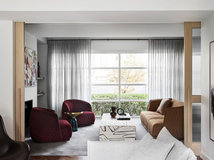

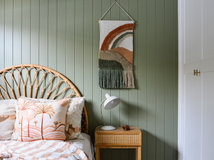

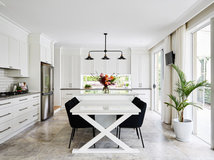
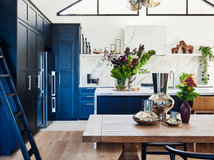

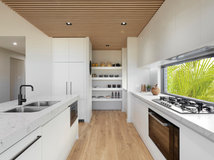



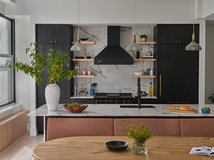
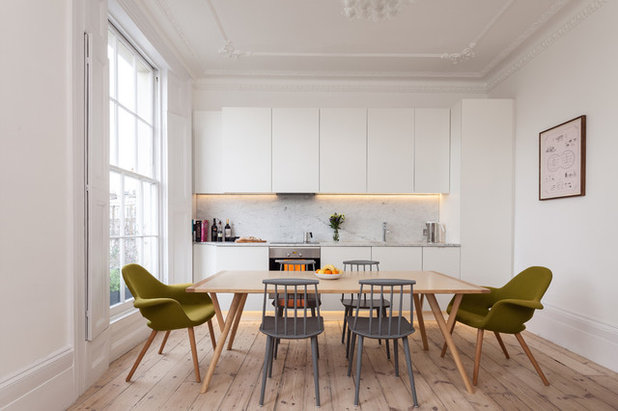
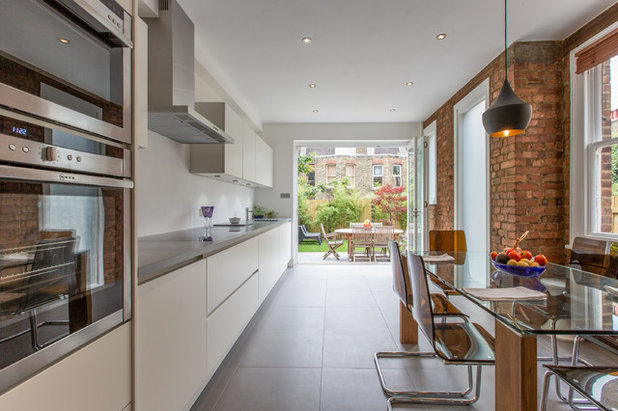
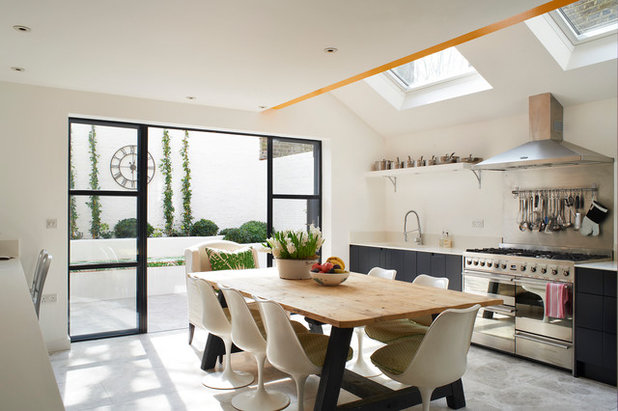
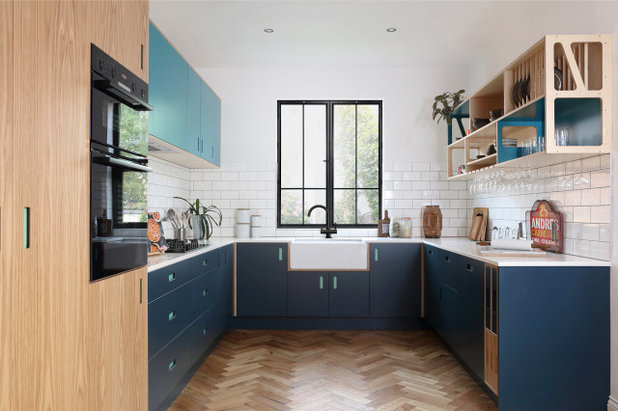
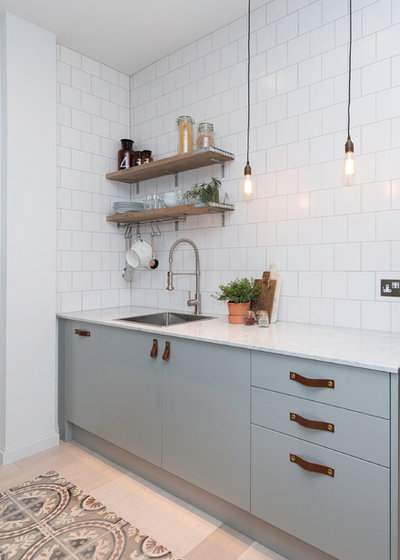
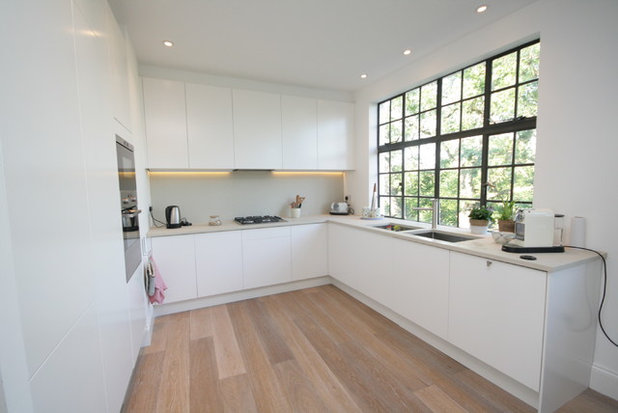
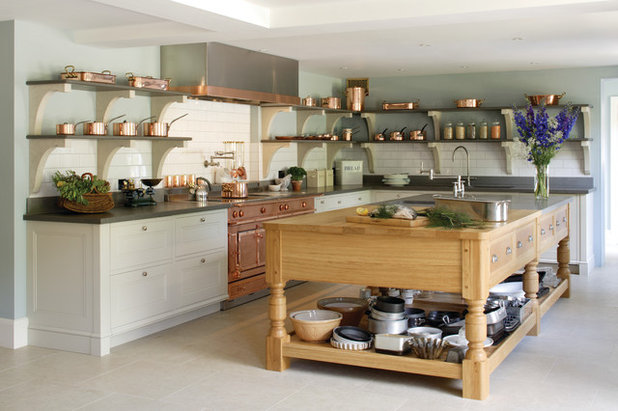
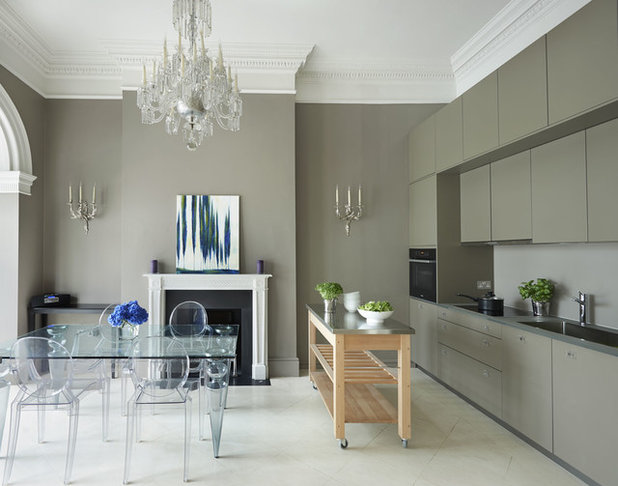
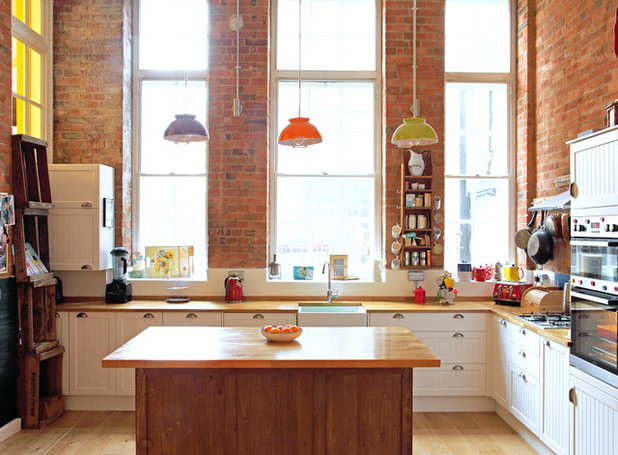
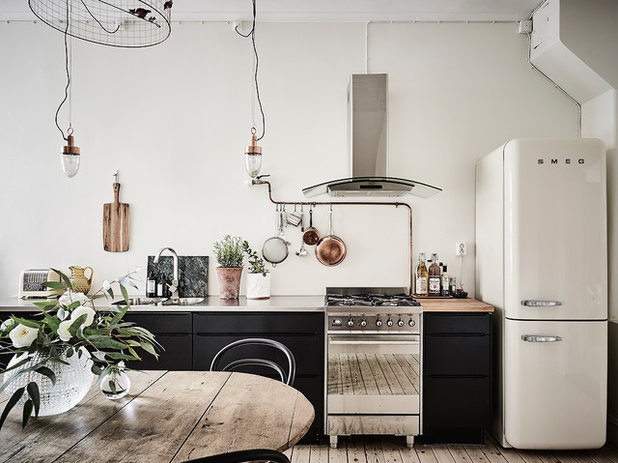
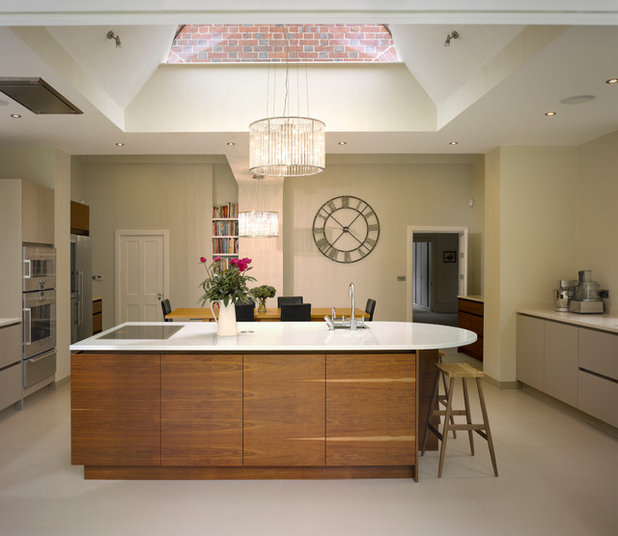
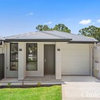
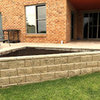
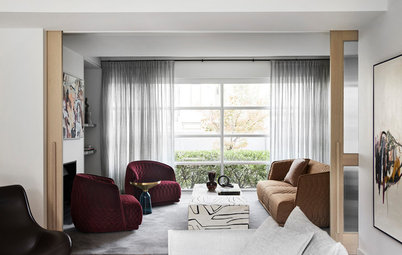

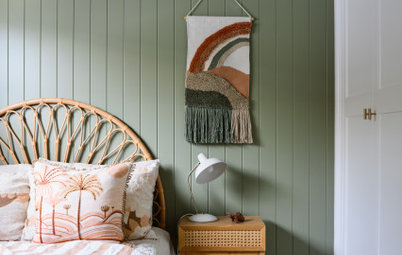
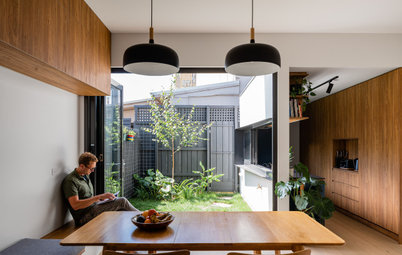
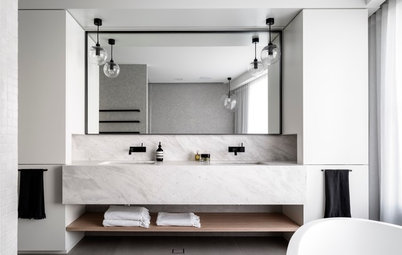
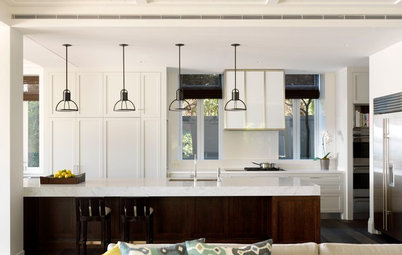
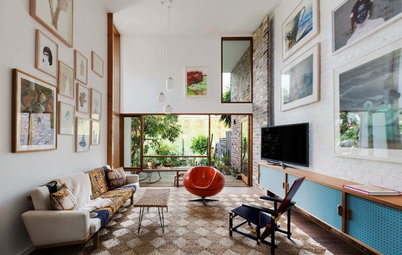
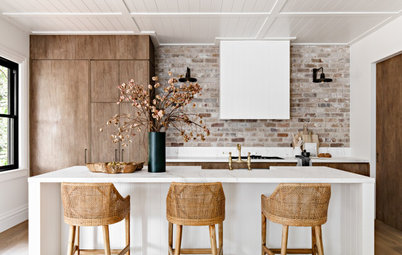
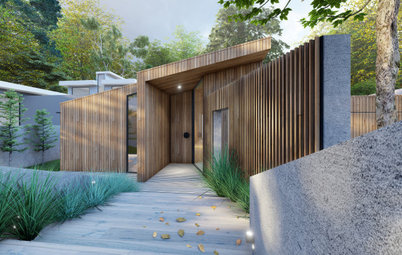
Maybe its one of those underbench integrated bar fridges you always see in properties on House Hunters International? So useful for a family 🤣🤣🤣
Likely in the unit on the right hand side of the image.
mary-ann, families come in all shapes and sizes and with all kinds of shopping/fridge habits. everyone’s needs are different. not everone wants or needs a giant fridge.
Also keep an eye on sites like Marketplace. Have seen some amazing kitchens advertised at very reasonable prices. If you can make it work in your place you’ve got yourself a bargain.